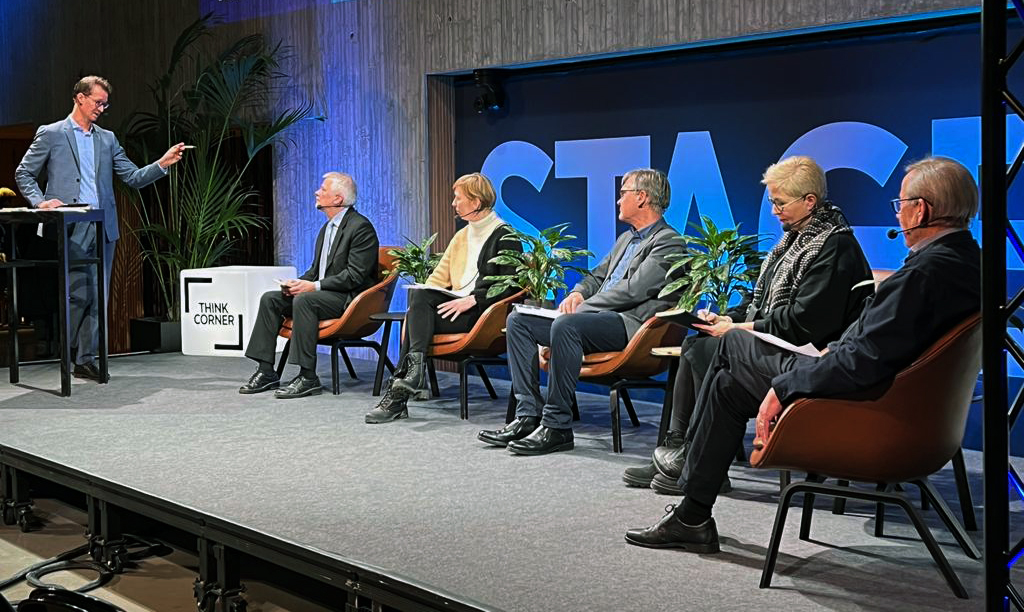
Due to low birth rates and longer lifespans, the population of Finland is ageing faster than in other EU countries. The forecast immigration is nowhere enough to compensate for the impacts of low birth rates. Absorbing the economy-weakening effects of ageing requires, in addition to increased immigration, raising the employment rate of both the original population and immigrants. Demographic change requires special attention from decision-makers and it should be taken into account in the government programmes in the future.
– In Finland, people leave the work life early in comparison to other Nordic countries. There is also room for improvement in the employment of people with partial work ability (people with lowered work ability). Additionally, the time people spend as students and the time mothers stay at home with their children are quite long, says Tarmo Valkonen, Research Advisor at Etla.
– Public finances should be strengthened now when the low number of children creates savings and the baby boom generation have not reached the age where they require a lot of care, Valkonen emphasised at the debate organised by the LIFECON project on 17 January 2023. The debate examined the theme of how the economy will endure the demographic change.
Finland is currently at a stage where the decreasing number of children decreases the expenditure of families and public finances in the short term. The negative effects of low birth rates only become evident in the economy once the smaller generations enter the work life. Finding employees will be more difficult, the economic growth will become slower and there will be less tax-payers. This is a long-term issue: the small generation will be in the work life for at least 35 years. We are not prepared for the worsening labour shortage.
The length of people’s careers can be influenced through the common measures of politics and work life operators. An example of effective measures are the pension reforms implemented in 2005 and 2017. The retirement age was raised and the early exit routes from work life were decreased. In 2021, people retired about three years later than in 2004. The positive change is visible in all education groups.
– Careers can be lengthened, not only at the end but also at the beginning and in the middle. The key element is ensuring the work ability and competence of employees, says Taina Leinonen, Chief Researcher at the Finnish Institute of Occupational Health.
– Especially in the younger age groups, incapacity for work caused by mental health disorders such as depression is increasing. The National Mental Health Strategy (2020–2030) and the Mental Health at Work Programme provide means with which mental health and the well-being of work communities can be supported.
The increasing of immigration and the related integration and training investments are necessary for ensuring the balance of the national economy and public finances. Integration of immigrants must be facilitated by welcoming immigrants as equal members of our work communities.
Another necessary path is the promotion of employment at different ages. It would benefit people themselves as their income would increase, and it would benefit companies and public services through increased number of workers and public finances through higher tax revenues and lower income transfer expenditure.
– Despite the measures mentioned above, the decreasing of the number of working people in relation to the rest of the population will inevitably slow down the increasing of the living standard and it will weaken the opportunities of maintaining the welfare state with the current tax rate. We all must prepare for this and decision-makers in particular in the future government programmes, Valkonen emphasises.
Further information
Taina Leinonen, Chief Researcher, Finnish Institute of Occupational Health, tel. +358 (0)50 327 1723, taina.leinonen@ttl.fi
The life course and economic implications of demographic change (LIFECON) project examines the factors contributing to demographic change at the different stages of individuals’ lives: when starting a family, in work life, and during the care and health of advanced age. Additionally, the project investigates the impact that demographic change has on national economy – especially on public finances. The project provides decision-makers and experts with information about the reasons, consequences and solutions of the changing population structures. The project is co-ordinated by the Finnish Institute of Occupational Health and its participants include Etla Economic Research and the University of Helsinki.
LIFECON is one of the five research projects of the STN DEMOGRAPHY programme. The project received funding from the Strategic Research Council (SRC) which is connected to the Academy of Finland.
The experts of the projects of the STN DEMOGRAPHY programme have compiled an information package for decision-makers: Demographic change tests the resilience of society. The package will be published in a few days.